

Easing the transition to postsecondary for students with disabilities
Your guide to recently released books, CDs and other teaching resources. For additional reviews of French-language resources, click here. With the exception of some classroom sets, items reviewed are available on loan from the Margaret Wilson Library at the College. Contact Olivia Hamilton at 416-961-8800 (toll-free in Ontario 1-888-534-2222) ext. 679 or e-mail library@oct.ca. |
Making a difference
Cases for Teacher Development
Preparing for the Classroom
Developed by the Ontario College of Teachers
Edited by Déirdre Smith and Patricia F. Goldblatt of the Standards
of Practice and Education Unit

Many good things can be said about this work as a contribution to teaching and teacher education: the range, richness and authenticity of the stories, the implicit Canadian flavour and the universal appeal. The stories are accompanied by sensible, critical commentaries by practitioners and researchers, the latter well known in the Canadian and international research community (Clandinin, Booth, Cole, Manley-Casimir, Russell, Axelrod, and many others). These commentaries open up multiple perspectives, uncover silenced assumptions and suggest generalizations and principles. But they do not prescribe, thus inviting many other points of view and experiences and reflection.
Topics will be of interest to school principals, experienced teachers, teacher candidates, specialists and the broader community, including parents and policy-makers. The overall effect of this book is to contextualize teaching and education as complex enterprises. This is achieved, not because the narrators and commentators agreed to frame teaching as a complex act, but precisely because they did not. Their contributions were made independently and therein lies the great value of the work.
But there are shortcomings. I approached the book with the promise of its title: Cases for Teacher Development: Preparing for the Classroom. As a teacher educator, I welcome a much-needed focus on the preparatory stage of the profession. But the introduction clarifies the broader appeal of the work and suggests that the thread which runs throughout is the complex question, “What does it mean to be a teacher?” which might be a more appropriate title for the book. At any stage of professional development the stories have value, but there is particular resonance for teacher candidates and teacher educators in Chapters 6 and 8 (Student Teacher Authority and Classroom Management), for experienced teachers in Chapters 4 and 11 (Sharing Classrooms and Re-entering the Profession), and principals would be interested in Chapters 1 and 10 (Affects of Diversity and Parental Influences on Schools and Teachers).
I also anticipated a pedagogical focus – it is after all a book about teaching – but that eludes us. Issues that impinge on pedagogy are explored – evaluation of the new teacher, relationships, respect, parental involvement, principals’ decision-making – but concerns specific to new teachers about classroom teaching are not addressed directly.
The narratives are dynamic and engaging and the commentaries contest assumptions but do not provide definitive answers. The stories span the life of the teaching profession and are of great value for their authenticity. They provide opportunities for reflection and professional development.
![]() Cases for Teacher Development, Sage Publications, Thousand Oaks,
California, 2005, hardcover ISBN 1-4129-1366-7, $79.95, softcover ISBN
1-4129-1367-5, $39.95, 272 pages, distributed by Login Brothers Canada,
tel 905-507-8953 or 1-800-665-1148, fax 905-507-9919 or 1-800-665-0103,
www.lb.ca, orders@lb.ca
Cases for Teacher Development, Sage Publications, Thousand Oaks,
California, 2005, hardcover ISBN 1-4129-1366-7, $79.95, softcover ISBN
1-4129-1367-5, $39.95, 272 pages, distributed by Login Brothers Canada,
tel 905-507-8953 or 1-800-665-1148, fax 905-507-9919 or 1-800-665-0103,
www.lb.ca, orders@lb.ca
Reviewed by Alice Collins, who is dean at the Faculty of Education of Memorial University of Newfoundland and president of the Canadian Association of Deans of Education.
Being Smart about Gifted Children
A Guidebook for Parents and Educators
by Dona J. Matthews and Joanne F. Foster
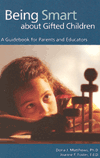 Written by Ontario educators, this book addresses one of the most misunderstood
and under-served groups in our schools.
Written by Ontario educators, this book addresses one of the most misunderstood
and under-served groups in our schools.
Teachers have the daunting task of meeting the needs of diverse students, implementing individual education plans and modifying curriculum so that all their students thrive. Without a challenging curriculum, gifted students can become bored and inattentive. They may also be misdiagnosed with hyperactivity or attention deficit disorder. Gifted students who fall through the cracks may be at risk of dropping out of school. But because gifted programs are seen as elitist, this group is often ignored. Being Smart about Gifted Children advocates for gifted children by presenting current research and practical solutions for identifying and teaching these students.
Chapter ten discusses motivation in self-directed learners: “Parents and teachers of gifted children should realize that highly capable learners do not automatically get high marks on their report cards.” Low grades may reflect the disengagement of a self-directed learner in a boring classroom environment.
The authors present “no single formula for living or working with gifted children,” but offer readers “some perspectives and understandings that can help us make good and informed decisions, and find ways to make a difference so that children experience their world as an engaging place in which to live, laugh, and learn.”
This is a valuable resource for any person involved in the education of gifted children.
![]() Being Smart about Gifted Children, Great Potential Press, Scottsdale,
Arizona, 2005, ISBN 0-910707-66-9, softcover, 408 pages, $37.95, distributed
in Canada by Monarch Books, tel 416-663-8231 or 1-800-404-7404, fax 416-736-1702,
www.monarchbooks.ca, monarch@monarchbooks.ca
Being Smart about Gifted Children, Great Potential Press, Scottsdale,
Arizona, 2005, ISBN 0-910707-66-9, softcover, 408 pages, $37.95, distributed
in Canada by Monarch Books, tel 416-663-8231 or 1-800-404-7404, fax 416-736-1702,
www.monarchbooks.ca, monarch@monarchbooks.ca
Reviewed by Kerry-Lee Finkle, who is a program officer at the Ontario College of Teachers.
Guided Comprehension in the Primary Grades
by Maureen McLaughlin
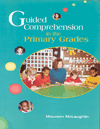 Contemporary research into literacy acquisition confirms the importance
of the early years. A crucial indicator of future school success is the
child’s ability to construct meaning from texts and communicate that
understanding.
Contemporary research into literacy acquisition confirms the importance
of the early years. A crucial indicator of future school success is the
child’s ability to construct meaning from texts and communicate that
understanding.
Guided Comprehension in the Primary Grades is adapted from the instructional framework originally presented by Maureen McLaughlin and Mary Beth Allen in Guided Comprehension: A Teaching Model for Grades 3–8. The new book offers a comprehension-based teaching model with developmentally appropriate practices for children at various stages. The model is based on the premise that reading is a cognitive process that increases in scope and complexity as children develop.
The comprehension model is delineated as a three-stage process involving direct and guided strategy instruction. Ways to organize and manage the model in each grade provide a helpful bridge from the theory to its classroom application.
The model is also applied to popular primary-level themes – stories by Eric Carle, animals, dinosaurs and Arthur the Aardvark – and multiple primary-grade lessons and examples of student work are included. Theme-based plans highlight goals, assessment techniques, comprehension strategies, routines and resources.
Just under half the book is given to the appendixes, which include a wide range of resources for planning, supporting and delivering effective reading comprehension instruction as well as a developmental continuum for reading and writing, blackline masters, sources for levelled texts and assessment alternatives.
This book is a valuable resource for both primary-grade teachers and others involved in reading instruction.
![]() Guided Comprehension in the Primary Grades, International Reading Association,
Newark, Delaware, 2003, ISBN 0-87207-005-0, softcover, 368 pages, US$34.95,
tel 1-800-336-7323, fax 302-731-0878,www.reading.org, customerservice@reading.org
Guided Comprehension in the Primary Grades, International Reading Association,
Newark, Delaware, 2003, ISBN 0-87207-005-0, softcover, 368 pages, US$34.95,
tel 1-800-336-7323, fax 302-731-0878,www.reading.org, customerservice@reading.org
Reviewed by Lillian Gilchrist, an elementary teacher with the Hamilton-Wentworth District School Board.
Why Gender Matters
What Parents and Teachers Need to Know about the Emerging Science of Sex Differences
by Leonard Sax, MD, PhD
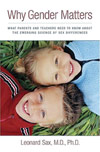 The first half of this book is full of fascinating and useful information
on gender differences in the brain. In the second half, Sax draws his own
conclusions about how children should be taught and parented based on these
current research findings. Some of his conclusions are disturbing.
The first half of this book is full of fascinating and useful information
on gender differences in the brain. In the second half, Sax draws his own
conclusions about how children should be taught and parented based on these
current research findings. Some of his conclusions are disturbing.
Sax talks about the need for a firm hand in child rearing, saying that children need to be shown who is boss. He derides showing too much respect to children and allowing them to make their own choices.
One of his proposals for monitoring teenage behaviour is to give them a global positioning satellite (GPS) watch. “You lock the watch on your teen’s wrist and then monitor your child’s location in real time, online.”
On the topic of sex-prevention, he concludes that boys are hard-wired to want sex and it’s the girl’s job to say no.
One of the most disturbing passages is his discussion of the “anomalous” male – by which he means the sensitive male. He describes this as a problem that can be helped with early intervention. He advises parents to “avoid computer science camps, arts camps, music camps, and the like.” Instead, “adopt and maintain a firm disciplinary style … and encourage competitive sports.”
He quotes sociologist Patricia Sexton, saying these boys are “reluctant to acknowledge the connection between school honours and feminization, or to inquire into whether their success can be attributed more to acceptance of female norms than to brilliance or superior intellectual endowments.”
For Sax, academic success is feminine, while sports prowess is a hallmark of masculinity. He concludes, “He may grow up to be a mission specialist on the space shuttle, but he’ll never be the pilot.” This line is indicative of Sax’s underlying attitude: we need to get back to a world where men are men and women are women.
He spends too much time on the topic of permissive parenting, which has little to do with gender differences in the brain. He quotes Harvard professor Jerome Kagan, who holds up puritan New England as a time when “very harsh punishments for children” were used to create “model citizens.”
We are all too aware of the swing to the right in the US over the past twenty years. Why Gender Matters illustrates how this ethos can permeate educational thinking.
![]() Why Gender Matters,
Broadway Books, Toronto, 2006, ISBN 385.51073-X, softcover, 320 pages,
$34.95, distributed in Canada by Random House, tel 905-624-0672, fax
905-624-6217, www.randomhouse.ca
Why Gender Matters,
Broadway Books, Toronto, 2006, ISBN 385.51073-X, softcover, 320 pages,
$34.95, distributed in Canada by Random House, tel 905-624-0672, fax
905-624-6217, www.randomhouse.ca
Reviewed by Michael Reist, who is head of the English department at Robert F. Hall Catholic Secondary School in Caledon East.
How to Make a Difference
Inspiring Students to Do Their Best (e-book)
by Marjan Glavac
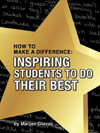 How to Make a Difference reviews strategies for bringing order, industry
and success to students’ working environments. It also took me on
a trip down memory lane.
How to Make a Difference reviews strategies for bringing order, industry
and success to students’ working environments. It also took me on
a trip down memory lane.
In the anecdotal musings of teacher Marjan Glavac, I was transported back to my early teaching days in elementary classrooms. The stated goal of How to Make a Difference is to nurture self-esteem in students. Glavac, an Ontario elementary teacher, describes his strategies for becoming better acquainted with his students and more knowledgeable about his own strengths and weaknesses as an educator.
While the suggested techniques are not new, they offer practical “survival tactics” for beginning teachers and/or those experiencing organizational and discipline problems. We all need somewhere to start and How to Make a Difference provides one.
The 81-page book comes with a 27-page student handbook with ready-to-use worksheets. More of this material and fewer teacher-directed activities would make the package even more useful. More meticulous cross-referencing of the two books would make them more teacher-friendly. A list of resources at the end of each chapter and subtitles for quick access to strategies and techniques would add an important dimension. But the beauty of an e-book is that it is always a work-in-progress. Perhaps these suggestions will be taken up.
How to Make a Difference provides busy educators – particularly new ones – with practical, field-tested teaching and organizational strategies.
![]() How
To Make a Difference, self-published e-book, 2004, 81 pages, US$27.00,
www.howtomakeadifference.com, marjan@glavac.com
How
To Make a Difference, self-published e-book, 2004, 81 pages, US$27.00,
www.howtomakeadifference.com, marjan@glavac.com
Reviewed by Gail Lennon, who teaches distance education online secondary courses for adults with the Bluewater District School Board in Chesley.
Inclusive Teaching
Creating Effective Schools for All Learners
by J. Michael Peterson and Mishael Marie Hittie
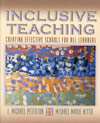 This informative book attempts to answer the important question: How can
we make our classrooms more inclusive and thereby become inclusive teachers?
This informative book attempts to answer the important question: How can
we make our classrooms more inclusive and thereby become inclusive teachers?
The inclusive classroom is a place where all students learn together well and where their teacher intentionally builds “a learning community composed of children of diverse abilities.”
The book begins with a historical study of inclusion in American schools. The authors then outline strategies for inclusive teaching that they call the four building blocks: Multilevel Teaching, Scaffolding, Multiple Intelligences and Learning Styles. Numerous examples are provided. Finally, the book addresses how teachers can act as leaders – working with administration, the community and the students to create inclusive schools.
This book is a valuable resource for understanding how students with learning disabilities can best learn within a regular classroom. In particular, teachers new to the profession would find its classroom strategies and approaches very helpful. Interesting and informative – but not light reading – the book was designed as a university text.
One particular sentence stuck me and made me rethink how I work with students of varying abilities: “We must be careful to see students with labels as children first.”
![]() Inclusive Teaching, Allyn & Bacon, Boston, Massachusetts, 2004, ISBN
0-205-46479-3, softcover, 560 pages, $109.95, distributed in Canada by Pearson
Education, tel 416-447-5101 or 1-800-361-6128, fax 800-563-9196, www.pearsoned.ca,
cdn.ordrs@pearsoned.com
Inclusive Teaching, Allyn & Bacon, Boston, Massachusetts, 2004, ISBN
0-205-46479-3, softcover, 560 pages, $109.95, distributed in Canada by Pearson
Education, tel 416-447-5101 or 1-800-361-6128, fax 800-563-9196, www.pearsoned.ca,
cdn.ordrs@pearsoned.com
Reviewed by Kenneth MacKinnon, who teaches Grade 2 and primary music at Macklin Public School in Scarborough.
Just one more time …
by Sharon Fitzsimmins
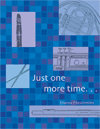 You don’t have to be a music teacher to fully understand the significance
of the title of this book … but it helps! Think of the number of
times we have said that to our bands, choirs, orchestras or guitar students.
Teachers of all subjects know that practice makes perfect, but in the world
of music teaching that old adage has special meaning. For music teachers
of all ages and stages, but particularly for beginning music teachers, this
book is an inspiration and a valuable resource. Sharon Fitzsimmins has gathered
up, organized, and now shares her music-teaching experiences and resources
from her 30-year career at Barrie North Collegiate.
You don’t have to be a music teacher to fully understand the significance
of the title of this book … but it helps! Think of the number of
times we have said that to our bands, choirs, orchestras or guitar students.
Teachers of all subjects know that practice makes perfect, but in the world
of music teaching that old adage has special meaning. For music teachers
of all ages and stages, but particularly for beginning music teachers, this
book is an inspiration and a valuable resource. Sharon Fitzsimmins has gathered
up, organized, and now shares her music-teaching experiences and resources
from her 30-year career at Barrie North Collegiate.
This book contains ready-to-use ideas that work for performance and non-performance classroom activities, vignettes of an inspirational and motivational nature, and practical suggestions and guidelines for everything from music festivals to parents’ groups, from budgeting to the importance of student leadership. In this book, Mrs. Fitz, as her students called her, provides music teachers with an always-welcome infusion of positive energy and pride, combined with advice and advocacy.
In the section of the book titled Making Music Class Even More Exciting, music teachers will find many unique projects for their students. As with any type of activity designed for one class, readers will have to adjust the ideas to fit the needs, abilities and resources of their own particular situation. This music-teaching opus provides music teachers with many examples to follow and many reasons to keep believing in the power of music education.
![]() Just
one more time …, Kabibel Press, Kitchener, Ontario, 2004,
ISBN 0-9735412-0-2, softcover, 93 pages, $30.00, www.kabibelpress.ca, ktbileski@golden.net
Just
one more time …, Kabibel Press, Kitchener, Ontario, 2004,
ISBN 0-9735412-0-2, softcover, 93 pages, $30.00, www.kabibelpress.ca, ktbileski@golden.net
Reviewed by Jane Saunders, a music teacher at Fort William Collegiate Institute in Thunder Bay.
Lire et écrire au secondaire
un défi signifiant
by Godelieve De Koninck
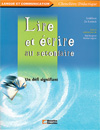 This book brings together information that teachers must usually search
out from a multitude of sources. Godelieve De Koninck, with Réal
Bergeron and Marlène Gagnon, explains how to teach reading and writing
at the elementary and secondary levels. De Koninck proposes an approach
that will spark your students’ curiosity – starting from the
premise that a bored student does not learn anything.
This book brings together information that teachers must usually search
out from a multitude of sources. Godelieve De Koninck, with Réal
Bergeron and Marlène Gagnon, explains how to teach reading and writing
at the elementary and secondary levels. De Koninck proposes an approach
that will spark your students’ curiosity – starting from the
premise that a bored student does not learn anything.
This is a valuable reference book. Examples are appropriate and varied. The organization and subtitles make it easy to find information quickly. Explanations are clear, the texts are relevant, pleasant to read and Canadian.
When I shared this book with colleagues, they said it was a resource every French teacher should have.
![]() Lire et écrire au secondaire, Chenelière Éducation,
Montréal, 2005, ISBN 2-7651-0396-8, softcover, 192 pages, $39.95,
tel 1-800-565-5531, fax 1-800-814-0324, www.dlcmcgrawhill.ca, clientele@cheneliere-education.ca
Lire et écrire au secondaire, Chenelière Éducation,
Montréal, 2005, ISBN 2-7651-0396-8, softcover, 192 pages, $39.95,
tel 1-800-565-5531, fax 1-800-814-0324, www.dlcmcgrawhill.ca, clientele@cheneliere-education.ca
Reviewed by Josette Blais-Jol, who is a Grade 7 and 8 music and Special Education teacher at Saint-Charles-Garnier Catholic High School in Whitby.
Quand lire rime avec plaisir
by Élaine Turgeon
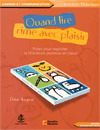 The main goal of this book is to make good use of children’s literature.
The book provides 52 cards and a reference section as well as reproducible
material.
The main goal of this book is to make good use of children’s literature.
The book provides 52 cards and a reference section as well as reproducible
material.
Turgeon also introduces collections and printable material, and provides a list of resources, though the resources are geared to francophone children, especially those from Québec. On the other hand, the activities and printable material may be used in conjunction with many books and resources.
![]() Quand lire rime avec plaisir, Chenelière Éducation, Montréal,
2004, ISBN 2-7651-0376-3, softcover, 240 pages, $34.95, tel 1-800-565-5531,
fax 1-800-814-0324, www.dlcmcgrawhill.ca, clientele@cheneliere-education.ca
Quand lire rime avec plaisir, Chenelière Éducation, Montréal,
2004, ISBN 2-7651-0376-3, softcover, 240 pages, $34.95, tel 1-800-565-5531,
fax 1-800-814-0324, www.dlcmcgrawhill.ca, clientele@cheneliere-education.ca
Reviewed by Jocelyne C. Hovenden, who teaches Grade 4 French Immersion at Agnes Taylor Public School in Brampton for the Peel DSB.
New from familiar series

 Green Bananas
Green Bananas
Series of 4 books
Red Bananas
Series of 6 books
At Crabtree Publishing, they are going bananas. Following the original Blue Bananas series, reviewed in December 2002, there are now Green Bananas and Red Bananas.
Designed for ages 4 to 6, each book in the Green Bananas series presents three interlinked stories.
These are amusing, high-interest stories that cover a wide range of themes. Many of the stories have a surprising twist at the end that will keep beginning readers interested and engaged.
Both series would make a fun addition to any elementary school library.
![]() Green Bananas Series (4 titles), Red Bananas Series (6 titles), Crabtree
Publishing Company, St. Catharines, Ontario, 2005, each 48 pages, hardcover
$18.36, softcover $7.16, tel 905-682-5221 or 1-800-387-7650, fax 905-682-7166,
or 1-800-355-7166, www.crabtreebooks.com, orders@crabtreebooks.com
Green Bananas Series (4 titles), Red Bananas Series (6 titles), Crabtree
Publishing Company, St. Catharines, Ontario, 2005, each 48 pages, hardcover
$18.36, softcover $7.16, tel 905-682-5221 or 1-800-387-7650, fax 905-682-7166,
or 1-800-355-7166, www.crabtreebooks.com, orders@crabtreebooks.com








